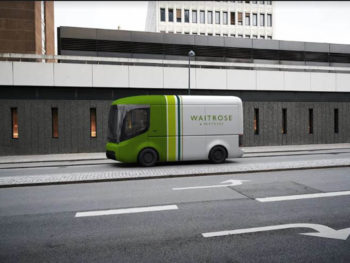Waitrose and John Lewis have announced plans to significantly increase dependence on electric vans to help transition its entire fleet away from fossil fuels by 2030.

The John Lewis Partnership will use two new designs of vehicle for its Waitrose.com food deliveries and for smaller John Lewis deliveries, saving over 20,000 tonnes of CO2 every year, equivalent to the carbon footprint produced by 2,500 UK households. The electric vans will be trialled next year and are said to offer greater capacity than the diesel-powered vans they replace and are said to have a potential operable life of 20 years, significantly improving the sustainability of the vehicles.
Justin Laney, partner & general manager of central transport at the John Lewis Partnership, said: “As our online services rapidly expand, we’re working hard to meet our goal of operating a zero fossil fuel in the next ten years. Our new electric vans are an ideal solution for home deliveries; the innovative design means they’re more efficient, but also respectful to the environment and the growing number of neighbourhoods in which we deliver.”
The electric vans follow Waitrose’s rapid expantion in light of COVID-19, which has seen it add more than 100,000 customer slots each week to its delivery service, to 160,000 per week. Waitrose.com now delivers to nearly 90% of postcodes across the country and the Waitrose Rapid service has trebled deliveries to 7,000 per week, with at least 40% of the slots reserved for vulnerable customers. The service offers up to 25 products for delivery within two hours.
The Partnership’s Ethics & Sustainability Progress Report also details the retailer’s commitment to increasing the number of electric vehicle charging points for customers and Partnership vans in its shop car parks.
In March 2019, the employee-owned business pledged to be net zero carbon across its entire operations by 2050 at the latest. In addition, the retailer is building a dedicated biomethane gas filling station for its largest HGVs to produce a low-carbon alternative to diesel and saving an estimated 100 tonnes of CO2 per year.

